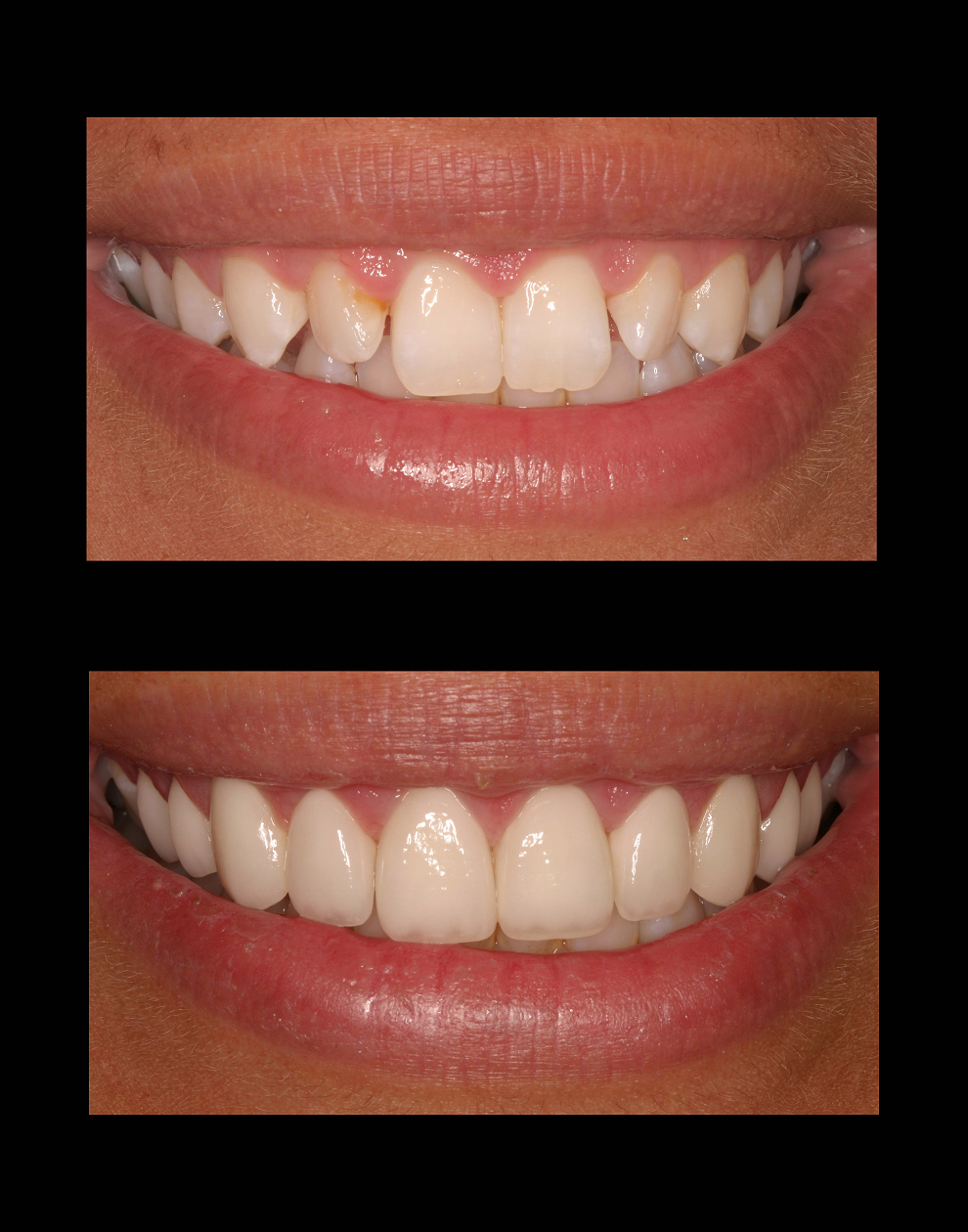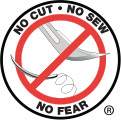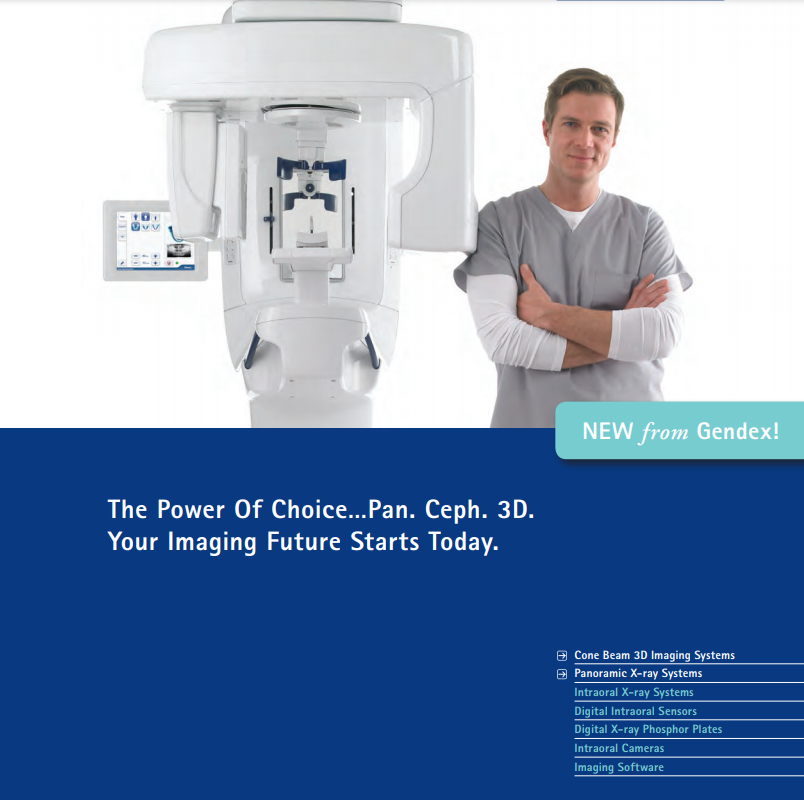Non-Surgical Therapy
Many times, the early stages of periodontal disease are best treated with non-surgical periodontal therapy. This usually consists of good oral hygiene training, scaling and root planning and antibiotic therapy. Scaling and root planning is done under local anesthesia and involves the use of special instruments which go beneath the gum line to effectively remove calculus, debris and diseased root surface. These procedures are performed by our hygiene team of dental professionals. 4 to 6 weeks or later, the areas are reevaluated for changes such as decreased bleeding, tissue swelling, probing scores and has there been any re-attachment of the tissues to the tooth.
In some cases, the occlusion (bite) may require adjustment.
Even in most severe cases of periodontal disease, non-surgical periodontal therapy most often precedes surgical therapy. This is done so that the overall tissue quality is improved prior to surgery and also limits the areas of required surgery.
When deep pockets between teeth and gums are present, it is difficult for you as a patient to thoroughly remove plaque and tarter. Patients can seldom, if ever, keep these pockets clean and free of plaque. Consequently, surgery may be needed to restore periodontal health if non-surgical treatments are not entirely effective.Antibiotics may be recommended to help control the growth of bacteria that create toxins and cause periodontitis. In some cases, our doctors may place antibiotics locally in the periodontal pockets after scaling. This may be done to control infection and to encourage normal healing.
Periodontal Plastic Surgery
Periodontal procedures are available to lay the groundwork for restorative and cosmetic dentistry and/or improve the esthetics of your gum line.
You may have asked your periodontist about procedures to improve a "gummy" smile because your teeth appear short. Your teeth may actually be the proper length, but they're covered with too much gum tissue. To correct this, your periodontist performs crown lengthening.
During this procedure, excess gum and bone tissue is reshaped to expose more of the natural tooth. This can be done to one tooth, to even your gum line, or to several teeth to expose a natural, broad smile.
Your dentist or periodontist may also recommend crown lengthening to make a restorative or cosmetic dental procedure possible. Perhaps your tooth is decayed, broken below the gum line, or has insufficient tooth structure for a restoration, such as a crown or bridge. Crown lengthening adjusts the gum and bone levels to expose more of the tooth so it can be restored.
What are the benefits of this procedure?
Whether you have crown lengthening to improve function or esthetics, patients often receive the benefits of both. A beautiful new smile and improved periodontal health - your keys to smiling, eating and speaking with comfort and confidence.

Gum Grafting

Periodontal procedures are available to stop further dental problems and gum recession, and/or to improve the esthetics of your gum line.
Exposed tooth roots are the result of gum recession (with bone loss). Perhaps you wish to enhance your smile by covering one or more of these roots that make your teeth appear too long (see photo section). Or, maybe you're not bothered by the appearance of these areas, but you cringe because the exposed roots are sensitive to hot or cold foods and liquids.
Your gums may have receded for a variety of reasons, including aggressive tooth brushing or periodontal disease. You may not be in control of what caused the recession, but prior to treatment your periodontist will help you identify the factors contributing to the problem. Once these contributing factors are controlled, a soft tissue graft procedure can repair the defect and help to prevent additional recession and bone loss.
Soft tissue grafts can be used to cover roots or develop gum tissue which is absent due to excessive gingival recession. Many times the graft may also be used to stop the recession and not necessarily cover the exposed root. During this procedure, your periodontist takes gum tissue from your palate or another donor source to cover the exposed root. This can be done for one tooth or several teeth to even your gum line and reduce sensitivity.
What are the benefits of this procedure?
A soft tissue graft can reduce further recession and bone loss. In some cases, it can cover exposed roots to protect them from decay; this may reduce tooth sensitivity and improve esthetics of your smile. A beautiful new smile and improved periodontal health - your keys to smiling, eating and speaking with comfort and confidence.
Bone Regeneration
The main cause of periodontal disease is bacteria in the form of a sticky, colorless plaque that constantly forms on your teeth. However, many factors can cause periodontal disease or influence its progression.
Your bone and gum tissue should fit snugly around your teeth like a turtleneck around your neck. When you have periodontal disease, this supporting tissue and bone is destroyed and pockets develop. Eventually, too much bone is lost, and the teeth need to be extracted.
Your periodontist has recommended a regenerative procedure because the bone supporting your teeth has been destroyed. These procedures can reverse some of the damage by regenerating lost bone and tissue.
During this procedure, your periodontist folds back the gum tissue and removes the disease-causing bacteria. Membranes (filters), bone grafts or tissue-stimulating proteins can be used to encourage your body's natural ability to regenerate bone and tissue.
As you can see, there are many options to enhance support for your teeth and to restore your bone to a healthy level. Your periodontist will discuss your best options with you.
What are the benefits of this procedure?
Eliminating existing bacteria and regenerating bone and tissue helps to reduce pocket depth and repair damage caused by the progression of periodontal disease. With a combination of daily oral hygiene and professional maintenance care, you'll increase the chances of keeping your natural teeth - and decrease the chances of serious health problems associated with periodontal disease.
Pocket Depth Reduction
The main cause of periodontal disease is bacteria in the form of a sticky, colorless plaque that constantly forms on your teeth. However, many factors can cause periodontal disease or influence its progression.
Your bone and gum tissue should fit snugly around your teeth like a turtleneck around your neck. When you have periodontal disease, this supporting tissue and bone is destroyed, forming "pockets" around the teeth.
Over time, these pockets become deeper, providing a larger space for bacteria to live. As bacteria develop around the teeth, they can accumulate and advance under the gum tissue. These deep pockets collect even more bacteria, resulting in further bone and tissue loss. Eventually, too much bone is lost, and the teeth need to be extracted.
Your periodontist has measured the depth of your pocket(s). A pocket reduction procedure has been recommended because you have pockets that are too deep to clean with daily at-home oral hygiene and a professional care routine.
During this procedure, your periodontist folds back the gum tissue and removes the disease-causing bacteria before securing the tissue into place. In some cases, irregular surfaces of the damaged bone are smoothed to limit areas where disease-causing bacteria can hide. This allows the gum tissue to better reattach to healthy bone.
What are the benefits of this procedure?
Reducing pocket depth and eliminating existing bacteria are important to prevent damage caused by the progression of periodontal disease and to maintain a healthy smile. Eliminating bacteria alone may not be sufficient to prevent disease recurrence.
Deeper pockets are more difficult for you and your dental care professional to clean, so it's important for you to reduce them. Reduced pockets and a combination of daily oral hygiene and professional maintenance care increase your chances of keeping your natural teeth - and decrease your chances of serious health problems associated with periodontal disease.
Crown Lengthening
Periodontal procedures are available to lay the groundwork for restorative and cosmetic dentistry and/or to improve the health and esthetics of your smile.
Crown lengthening is a surgical procedure that recontours the gum tissue and often the underlying bone surrounding one or more teeth so that an adequate amount of healthy tooth is exposed. Crown lengthening is often used as part of a treatment plan for a tooth that is to be fitted with a crown. This procedure provides the necessary space between the supporting bone and crown, preventing the new crown from damaging gum tissues and bone.
Your dentist or periodontist may also recommend crown lengthening in order to make a restorative procedure possible. If a tooth is badly worn, decayed or fractured below the gum line, crown lengthening adjusts the gum and bone levels to gain access to more of the tooth so it can be restored.
What are the benefits of this procedure?
Functional crown lengthening is an important part of an integrated effort to optimize your health, appearance, comfort and function. A beautiful new smile and improved periodontal health are your keys to smiling, eating and speaking with comfort and confidence.
>>Read More About Crown Lengthening<<
 Pinhole® Surgical Technique
Pinhole® Surgical Technique
George J. Papasikos, D.M.D., P.A. performs the Chao Pinhole® Surgical Technique in both the Bedminster and Montclair, New Jersey offices. Dr. Papasikos is Pinhole® Gingival Grafting Certified.
Gum recession breakthrough treatment also known as Pinhole Gum Rejuvenation™ and Lunchtime Gum Lift™ .
The Pinhole® Surgical Technique (PST®), invented and patented by John Chao, D.D.S., is a scalpel-free, suture-free procedure for treating gum recession. Dr. Papasikos was personally trained by Dr. John Chao, Inventor of the Chao Pinhole Surgical Technique. The Pinhole procedure is perfect for correcting gum recession and is a great alternative to traditional gum grafting.
If you have multiple recessed areas, are sensitive to drinking hot or cold beverages or experience sensitive gums, give us a call today to schedule a consultation.
This procedure is performed by making a small hole with a needle in the gum tissue. Using specially designed instruments, the gum tissue is loosened and guided over the receded part of the tooth. Since there is no incision or suturing, patients can expect minimal post-operative symptoms (pain, swelling and bleeding). Most patients also are pleasantly surprised by the instant cosmetic improvement.
Pinhole® Surgical Technique in available in Dr. Papasikos offices located in Montclair and Bedminster.
What is gum recession? Gum recession refers to the loss of gum tissue along the gumline. This can occur as a result of periodontal disease (gingivitis, periodontitis, advanced periodontitis), the natural aging process, or abrasive habits when it comes to brushing the teeth.
Why should gum recession be taken seriously? When gum recession occurs, the root structure of the tooth becomes exposed. This means that tooth decay and other problems can affect the teeth along the gumline and beneath it. Since healthy gums are essential for a healthy mouth, getting gum recession treated is important for lasting dental wellness.
What is the Pinhole® Surgical Technique (PST)? The Pinhole® Surgical Technique is a minimally invasive option for treating gum recession. Unlike traditional grafting techniques, PST is incision and suture free. All of the tools and techniques used to perform the Pinhole® Surgical Technique were created by Dr. John Chao, and who trained our doctor.
How does the Pinhole® Surgical Technique (PST) differ from traditional gum grafting? Traditional gum recession treatments involve the use of donor tissue or soft tissue grafts in order to rebuild the gumline. This soft tissue would be sutured in place and would join with existing gum tissue as it healed. While this traditional grafting treatment is effective, comparable results with better patient experience can be achieved through the Pinhole® Surgical Technique.
How is Pinhole® Surgical Technique (PST) performed? During the Pinhole® Surgical Technique, a needle is used to make a small hole in the patient’s existing gum tissue. Through this pinhole, special instruments are used to gently loosen the gum tissue. These tools help expand and slide the gumline to cover the exposed root structure. There are no grafts, no sutures, and no incisions needed with the Pinhole® Surgical Technique. It simply involves the adjustment of the existing tissue.
What are the benefits of Pinhole® Surgical Technique (PST)? The benefits of the Pinhole® Surgical Technique are many: • Less discomfort for the patient after treatment • Faster recovery for the patient than traditional grafting
- No need for uncomfortable sutures
- No need for scalpels or invasive surgical tools
- No need to take donor tissue from the patient’s palate
- Excellent, natural-looking, long-lasting result
To learn more about the Chao Pinhole® Surgical Technique, please contact one of our New Jersey offices located in Bedminster and Montclair.
LANAP® Laser Surgery
Dr. Papasikos is now certified LANAP® certified.
LANAP® = Laser Assisted Regeneration (LAR)
Read Step by Step Instructions
An FDA-cleared laser treatment called the LANAP protocol offers a less painful, more successful treatment alternative to conventional surgery. LANAP=LAR is the only scientifically, research proven methodology that results in true periodontal regeneration, new bone growth and gum tissue reattachment. LANAP and LAR is accomplished with the PerioLase MVP-7. It is a free-running, variable pulsed Nd:YAG laser. The 7 variable pulse durations can be thought of as “different lasers” in one device as they have discrete and discriminating tissue interactions. The LANAP=LAR treatment is one of the most successful protocols in treating gum disease because it can target the source of the inflammation without hurting or removing any healthy gum tissue, slow or stop attachment loss and decrease pocket depth, and allowing the body to recover from the chronic infection without the need for scalpel or sutures.
The LANAP® Protocol, the first-ever patented periodontal laser procedure is not a “disease management” or “laser soft care” technique. Designed by clinicians for clinicians, it is the revolutionary breakthrough in patient periodontal care for True Regeneration.
This is the World’s First EVER FDA Clearance for True Regeneration!
No other laser company…
No other laser device…
No other laser periodontal therapy…
…CAN CLAIM TRUE REGENERATION INCLUDING NEW BONE FORMATION.
No biologics used!
No exogenous growth factors!
No bone grafts!
No artificial membranes!
No scaffolds!
No stitches!

DOCTOR-DEDICATED, FULL MOUTH REGENERATIVE PROTOCOL DEVELOPED BY GPS FOR GPS AND SPECIALISTS ALIKE.
LAPIP™
Laser Implant Repair
Dr. Papasikos is now certified LAPIP™ certified.
Implants have been a “game changing” innovation in dentistry as a solution for missing teeth. Patients have invested significantly in this approach, only to be confronted with ailing and failing implants. The LAPIP protocol gives patients a first-line treatment option to protect their implant investment.LAPIP treatment is preferred by patients as a less invasive way to treat periodontally-involved inflammation around implants. Maintaining healthy tissue is proven to give longer life to implants – and to your patient’s smile.
The LAPIP protocol is the only patient-friendly, predictable solution for ailing implants. Studies indicate 95% of the failing implants treated with the LAPIP protocol have reintegrated in the pocket and stabilized with bone growth of 3-8 threads.
Because no resection or reflection of a vertically oriented flap is needed, the integrity of the structural tissue is retained. Thus all other future treatment options remain.
The LAPIP™ protocol for peri-implantitis
- Perio probe indicates excessive pocket depth.
- Laser vaporizes bacteria, diseased tissue, pathologic proteins, and titanium corrosion contaminants in soft tissue.
- Ultrasonic scaler tips are used to remove surface accretions.
- Bone is modified at time of surgery.
- Laser is used to form a stable fibrin blood clot containing stem cells from bone.
- Adhesion to clean surface, with a stable fibrin clot at the gingival crest to create a ‘closed system’.
- Occlusal trauma is adjusted.
- New attachment is regenerated.
Proven Success for Saving Implants
The LAPIP protocol is the only patient-friendly, predictable solution for ailing implants. Studies indicate 95% of the failing implants treated with the LAPIP protocol have reintegrated in the pocket and stabilized with bone growth of 3-8 threads.
Because no resection or reflection of a vertically oriented flap is needed, the integrity of the structural tissue is retained. Thus all other future treatment options remain.
Wilckodontics® and PAOOTM
Periodontally accelerated osteogenic orthodontics is a relatively new procedure designed to minimize the time taken for orthodontic treatment. The orthodontist avails of the aid of a periodontist to perform decortication of the bone and places bone graft for rapid orthodontic correction of malocclusion.
Procedure makes it a better alternative to orthognathic surgery in cases like mandibular skeletal Class-III malocclusion. It also offers better anchorage due to a difference in support around the anchored tooth and the tooth to be moved; furthermore, the treatment window of approximately 4 months provided due to this procedure provides a decrease time duration for orthodontic therapy.
CBCT Scan
The CBCT Scan allows different types of imaging for a wide range of clinical situations, giving flexibility to capture the images necessary for various procedures from general and preventive care to implants, extractions, root treatment, or orthodontics.

